‘Carpe Diem’ took on a whole new meaning, with what followed in the weeks after the trip – the lockdown. Looking back I’m so glad we seized the day (literally just that!) and thank the ‘Bundelkhandi’ bee buzzing in my head. The cousin couldn’t understand the urgency, the husband knew if he didn’t humour me there’d be Me sized bee in his bonnet and Murphy’s Law had been shown the door with a firm shove and so there we were in Orchha, having experienced it’s untamed side early in the morning, now looking for the ‘hidden’ stories amidst the monuments.
Read how we beat Mr. Murphy in – Picture Postcards from Bundelkhand
First Impressions
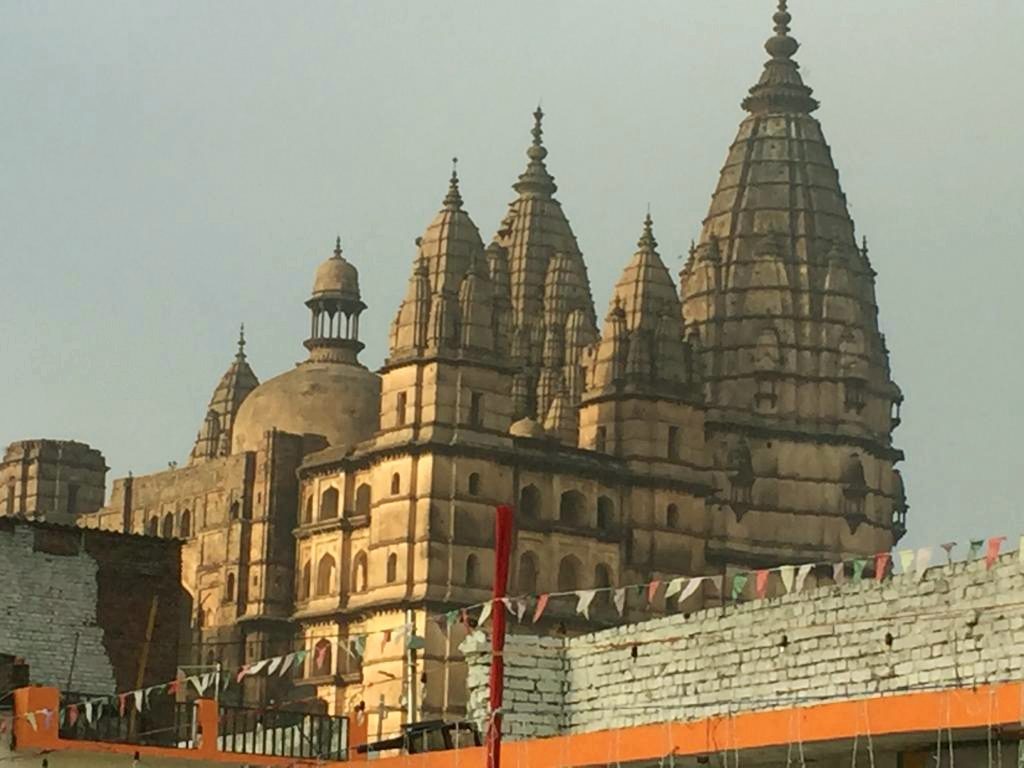
My sense of smell is mostly comatose but almost as soon as we drive through the blink and miss gates at the entrance of Orchha, I catch the unmistakable aroma of incense. It seems to permeate the air of the entire town and with each lungful inhaled the feeling of peace and quiet joy increases. Then I lay eyes on the Chaturbhuj temple and for a second I forget to breathe, stunned. The towering sight just dwarfs everything around it. A sensory snapshot of Orchha has been created.
Satiating Stomachs and Drinking in Sights
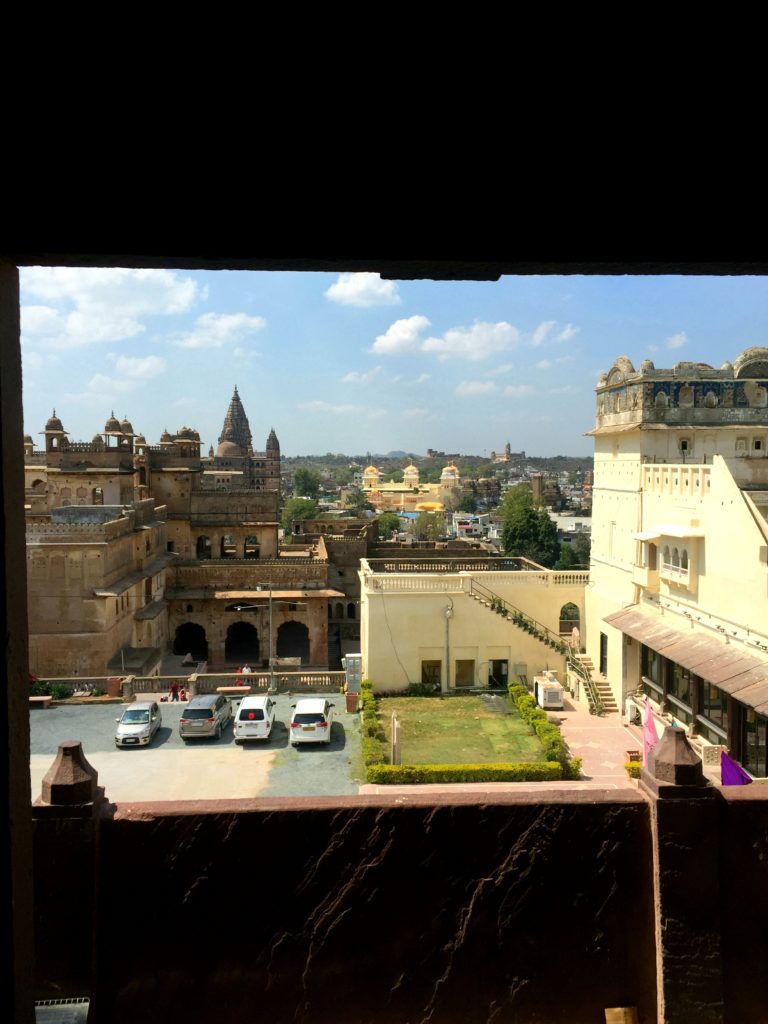
The town is buzzing by the time we head from our morning escapades for the two temples standing cheek by jowl in the heart of town. The short pathway to the Ram Raja temple is lined with small shops selling everything from sweetmeats, souvenirs to SIM cards. The smell and sight of fresh puris and sabzi assail us, the stomachs start rumbling reminding us that one can drink in sights but some hunger needs solid food! We randomly pick a joint and as we sit, the cousin strikes up a conversation with one of the women rolling the puris next to us. There is earthy wisdom as the topics meander from expectations from children, or a rather philosophical lack of it, to last evening’s Orchha fest on the ghats.
Read about indulging in some true gastronomical feasts in-Nasirabad’s Kachora: More than a Savoury Story
Hollow Halo
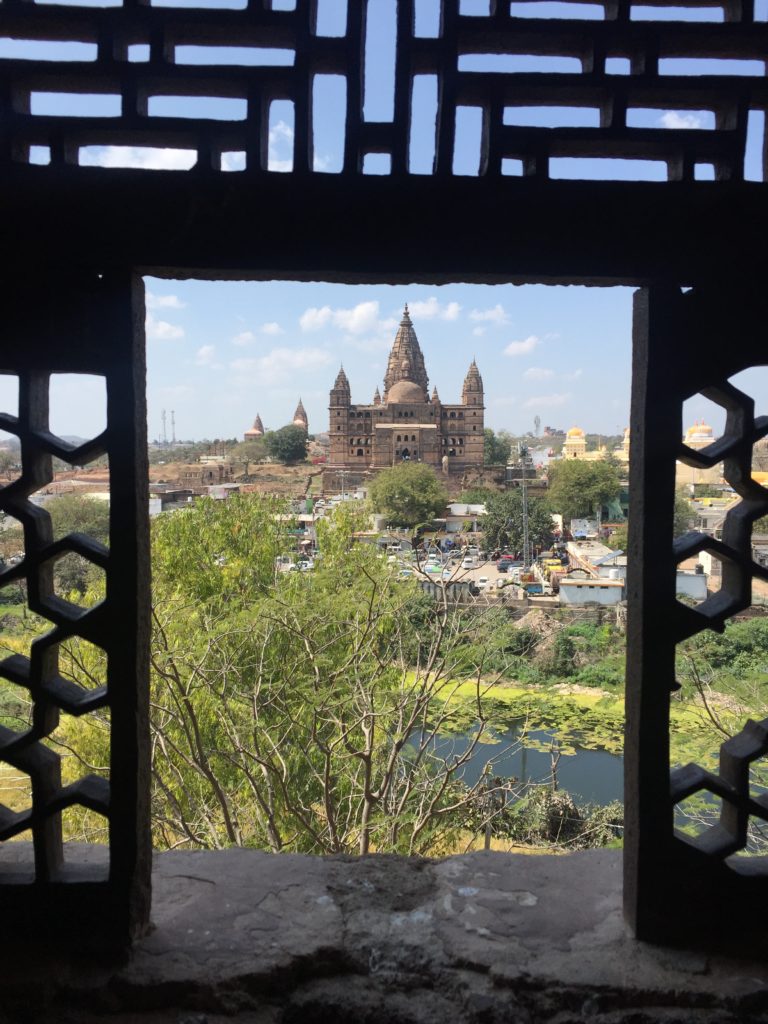
Re-energized, we climb the stairs of the Chaturbhuj temple. The name (Literally means ‘One who has four arms’, a reference to Vishnu.) aptly sums it up -it’s all sinewy, muscular and honed and sculpted at the same time. Built in the 16th century by Madhukar Shah for his wife, an ardent devotee of Lord Ram, it’s vimana is one of the tallest in India. It’s structure resembles a temple housed in a palace-fort, a peculiarity it shares with the other two famous temples of Orchha- Ram Raja and Laxminarayan. But as ornate as the facade is , the inside is a nondescript humongous hollow with a small sanctum holding even smaller idols. The young ‘priest’ tells us that the old idol of Vishnu was stolen and vandalized and when no treasure was found within, it was dumped back at the temple and now lies in an obscure corner. The story line of the temple and it’s deity have uncanny parallels.
Ornate facades in obscure places can be found while- Cycling in Dehradun -The Best Routes for Leisure Rides
A Tale of Two Temples
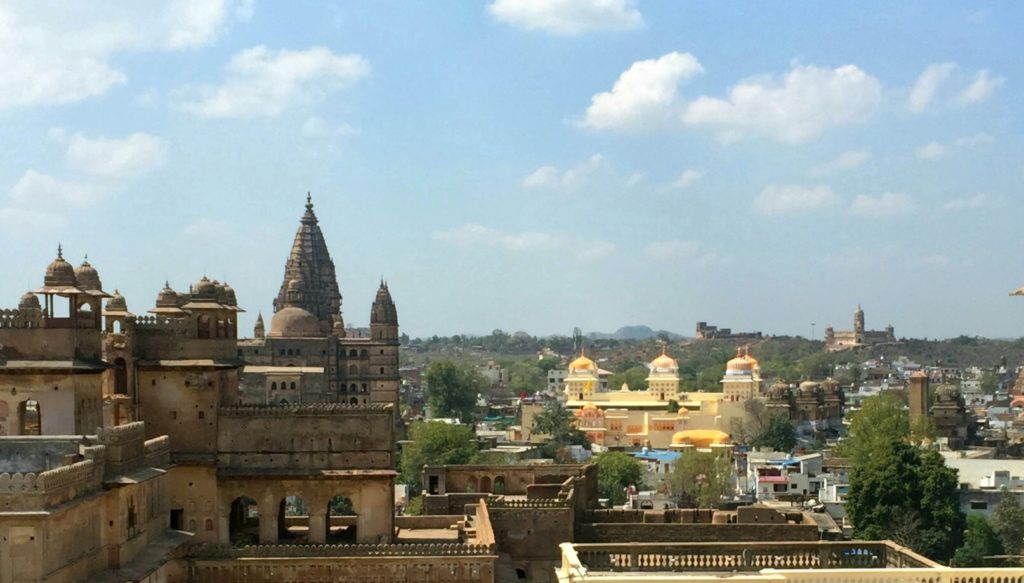
The hub of Orchha seems to be the Ram Raja temple, a cassata coloured complex and when you think about it, rightly so because here Lord Rama is worshiped as a divine king, complete with a gun salute accorded everyday. So, it is as much a functional palace as it is a temple and that would make him the longest serving monarch, at it since he was brought here in the 16th century, by Madhukar Shah’s wife- Ganesh Kunwari. A story of man proposes and god disposes, legend has it that it was the queen’s palace but once the idol was housed here since the Chaturbhuj temple (meant for him) wasn’t complete, it refused to move there. Therein stands a tale of two temples.
Inside, the accidental temple has a courtyard with colourful old tiles and is thronging with devotees lined up for darshan, sitting and lustily singing and clanging cymbals. On a small platform around a tree there are about half a dozen shivlings with amazing faces carved on them.
Varied Vignettes
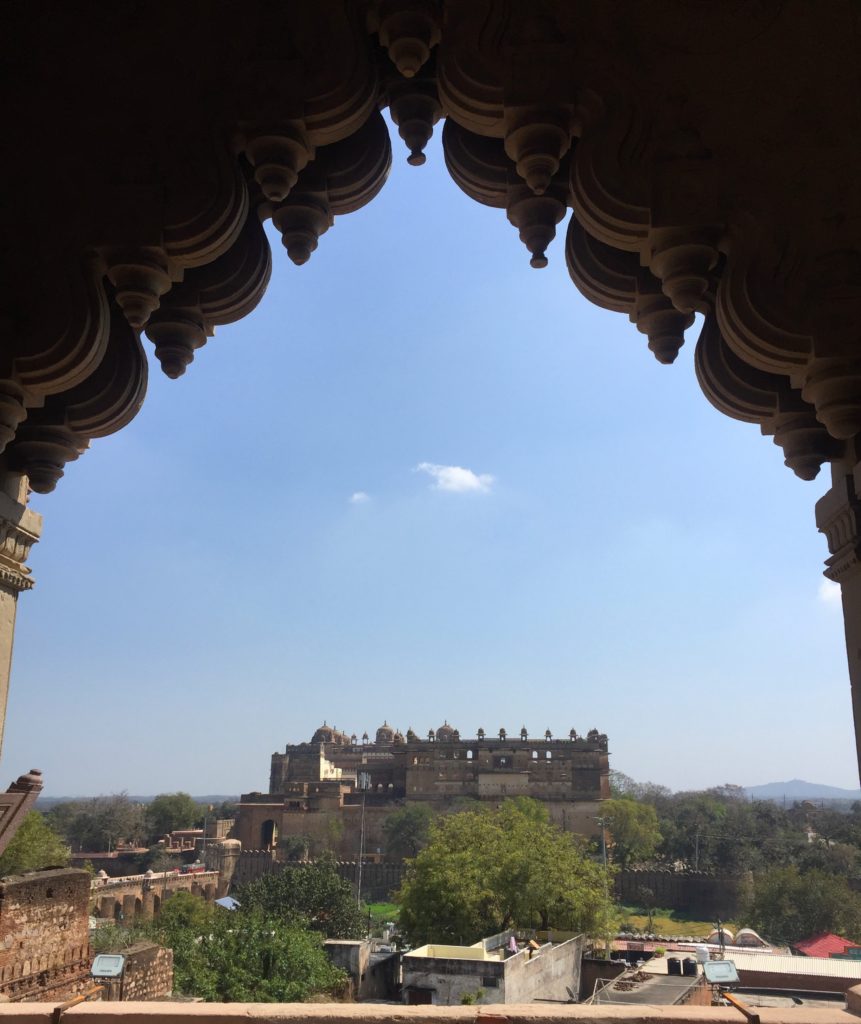
The Orchha fort, built by Rudra Pratap Singh, is on a natural island with the Betwa filling a seasonal moat. Housed within are palaces, pavilions, baths, gardens and assorted structures for housing the retinue and animals built over the years. Save a rich repository of vivid murals on the ceilings, especially in the king’s private chamber which also has a level view of the Chaturbhuj temple, the Raja Palace built in the early 16th century by Madhukar Shah is a rather austere affair surprisingly. Sheesh Mahal stands between Raja Mahal and Jahangir Mahal and has been converted into a hotel. A later addition made by Bir Singh Deo is the Jahangir Mahal, made for and named after the Emperor who apparently only spent one night here. The Mughal influence is distinctly visible with perfect symmetry, domes and cupolas. The staircases are blink and miss openings in the wall. A bit like a treasure hunt, the winner gets to go up to the next level (through dark, narrow and steep stairs) to latticed passages winding around the upper stories and the prize being a stunning view of the river, the forests, the cenotaph spires and the fields dotted with crumbling monuments. The vistas make me wish I had time, a thermos of coffee and my binos. The new audio guides are a boon and we wander around listening to them at leisure, much to the annoyance of the local guides.
Discover another place with a to-die-for view while-Disconnecting with the World on a Mountain Isle at Shaama
Shape-Shifting Subterfuge
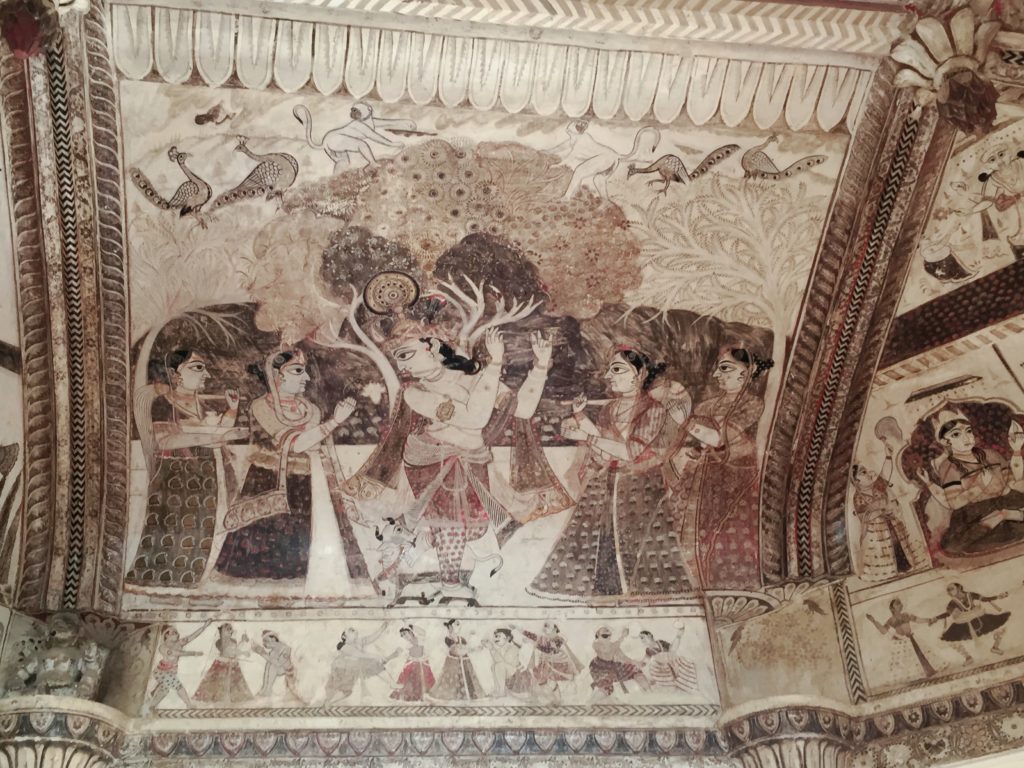
The sepia toned frescoes on the ceilings and walls in the halls of the Laxminarayan temple are exceptionally well preserved and an absolute treat! The structure built by Bir Singh Deo in 1622, on a hillock, stays true to the fort-temple template of Orchha but has a certain delicate air when compared to the other temples there, the bastions and cannon slots notwithstanding. With it’s geometrical sleights it’s an intriguing monument with an octagonal tower in the centre of a triangular courtyard set in a rectangular structure that still gives the appearance of being a triangle at the entrance. Phew, thank god I remember some geometry! To add one more ‘angle’ to the story, although its supposedly a temple the idols have only recently been installed. Go figure!
Read about the world famous frescoes in- An Ode to Ancient Life in Stone- The UNESCO World Heritage Site of Ajanta & Ellora
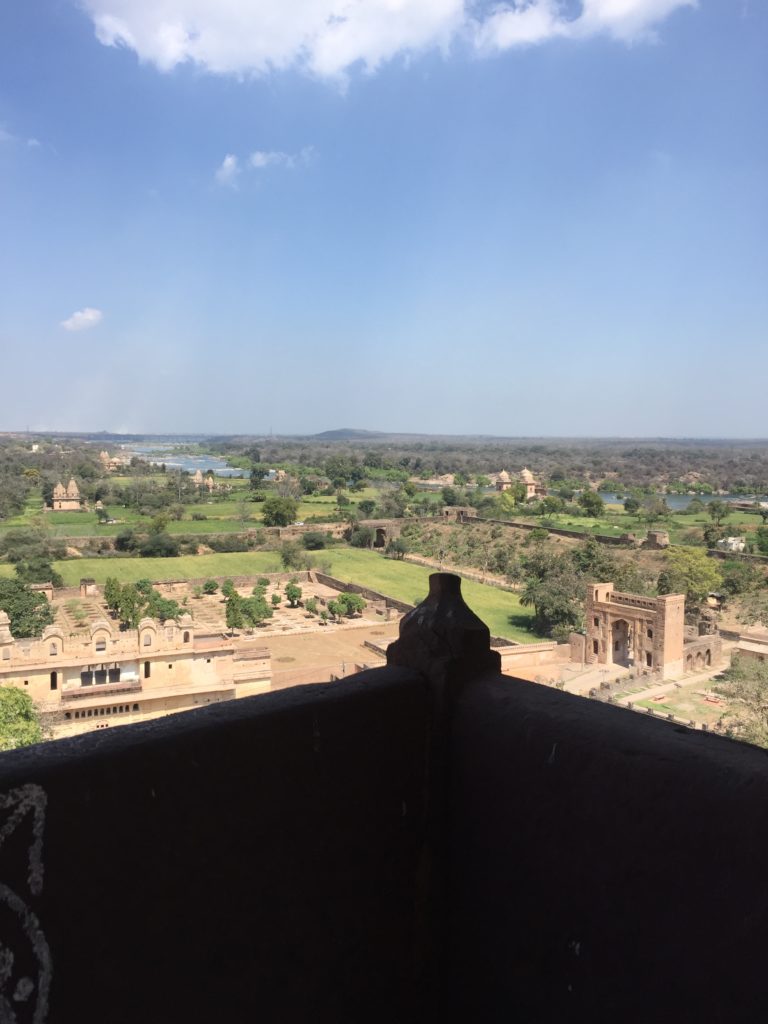
Orchha can be ‘done’ in a day..a long day that is! But then you’d be like the Betwa that skims the rocks in Orchha but doesn’t get to dive into the feel of the place. A long weekend would suffice and if you have more time or are jobless..well then, lucky you! Paucity of time and the heat made us skip some monuments so I guess a rerun will be on the anvil someday…maybe a post- monsoon trip this time.
Or you could try-Mandu & Maheshwar in the Monsoon Mist
Fact File-
The entry fee for the fort complex is –
Rs 10 for Indians
Rs 250 for foreigners
Audio guides are now available at the fort’s ticket counter and the sites are well marked till Jahangir Mahal. It then jumps straight to one of the monuments around the palace without telling how to get there.
Sound and Light Show-
The sound and light show is held in the Jahangir Mahal.
Fee- Rs 100.
Timings- 7:30 PM (Hindi) & 8:45 PM (English)
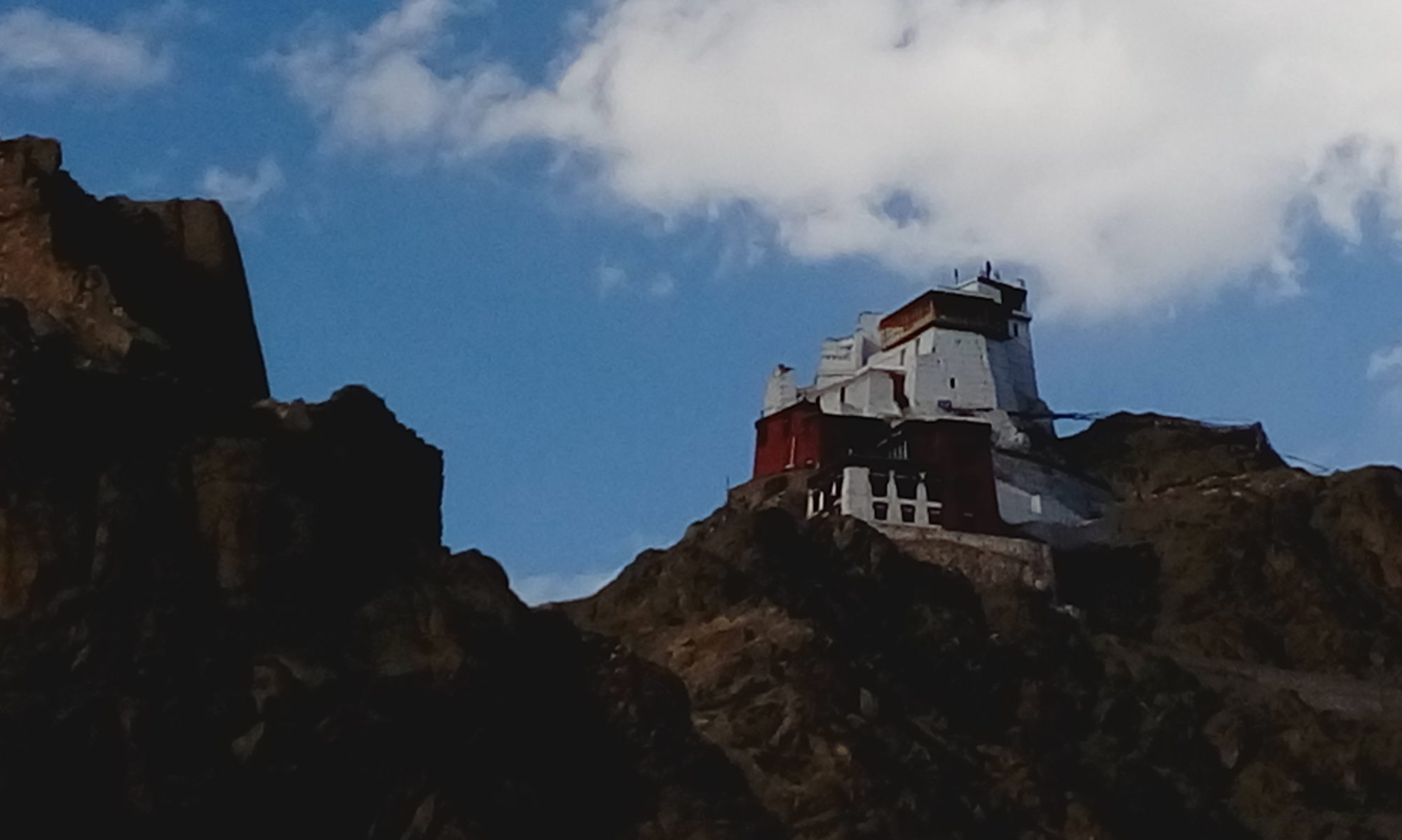
Good read. Feel like visiting the place.
Thank you! You must visit it:)
A more detailed blog than the earlier one. And more emotive and passionate expression of the tour undertaken. A lot of changes since our visits in the early 1970s as is evident from the excellent photographs accompanying the blog.
Thank you! Yes, on the whole the ASI is doing a commendable job of preserving monuments and with more people visiting the gen upkeep is in everyone’s interest.
Superb 😊
Thank you!!